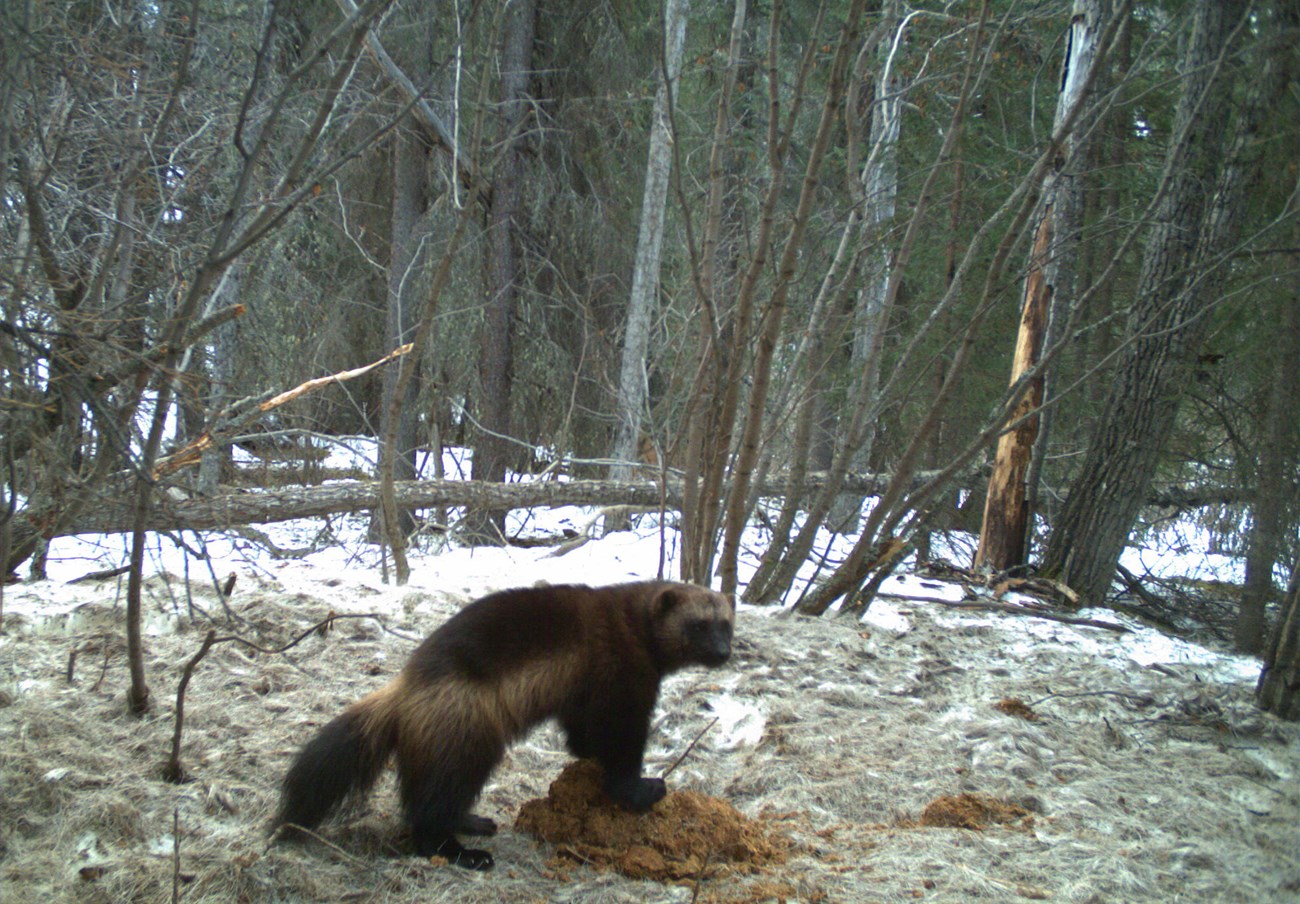Last updated: August 30, 2021
Article
Wolverines

NPS Photo
Wolverines are powerful, aggressive, territorial, and tenacious. They make their living by being very efficient scavengers. Wolverines are built to rip into and feed on frozen flesh and bone. They have strong teeth and well-developed muscles in their head, neck, and shoulders. Wolverines rely on a diversity of prey and they will eat just about any type of meat that they can find or kill. They eat smaller mammals such as ground squirrels and rodents when they can capture them and are capable of capturing and killing prey that is much larger than themselves such as a moose or caribou. However, more often than killing, wolverines will scavenge carcasses of animals killed by other predators, drag them away from the kill sites, and cache them for later use.
Wolverines are active year-round and are usually solitary animals. Males and females come together for a few days during the summer to mate. Both males and females may remate with other individuals during the breeding season and littermates may have different fathers. Reproduction is accomplished using delayed implantation. The egg is fertilized after mating, but development is paused in the uterus before implanting four to six months later. The mechanism of delayed implantation allows wolverines to have young when food is most abundant and to adjust the size of the litter to the availability of food. It is an effective way of reproducing in environments with limited and unpredictable resources. Reproduction entails many risks, and like many other long-lived wild animals, many wolverines don’t breed or raise young in years when food supplies are low. Because of small litter size and high mortality of kits and young, female wolverines rarely raise more than one young in their lifetime that survives to raise its own young.
Pregnant females build snow-dens for giving birth and nursing. Most dens that have been found consist of a complex of snow tunnels associated with boulders or rocks. Pups are born about 30 to 40 days after implantation, usually by late May. Litter size varies between 1 and 6 pups, but usually averages closer to two or three. Pups grow quickly and reach adult size by early winter. Pups probably stay associated with their mothers and siblings until they reach reproductive maturity in two or three years. There is some evidence that males may play some role in brood-rearing, particularly after young reach 8 months of age. Young males probably disperse farther than females, and females may occupy territories adjacent to their mother. Survival of young wolverines just after they gain independence is thought to be low.
Wolverines do not live at high densities anywhere throughout their range, and their home ranges are very large. In parks like Denali, the home range of individuals may range from 100 to 800 square kilometers. Individuals wander many kilometers in search of food, often following traditional travel routes that they use for many consecutive years.
Wolverines are probably one of the least studied carnivores in North America and one of the most difficult terrestrial animals to study. Wolverine ecology has not been thoroughly studied in Denali, but scientists studying other predators commonly see their tracks during other wildlife studies.
The reduction and elimination of wilderness throughout the western contiguous United States and western Canada is a major factor in the decline of wolverine populations in these once wild areas. They are considered a species at risk in the Northwest Territories, Canada, a species of special concern in western Canada, and are currently on the US Fish and Wildlife Service list for consideration as a threatened or endangered species for the contiguous United States. Wolverine populations in Alaska, however, are considered stable. According to the Alaska Department of Fish and Game, the continued health of wolverine populations in Alaska is best assured by both protecting large expanses of wilderness and preventing overharvest.
